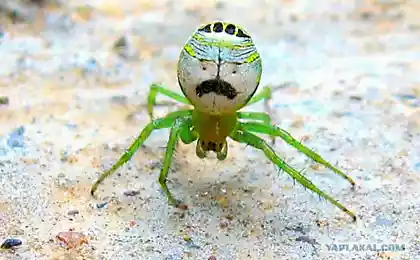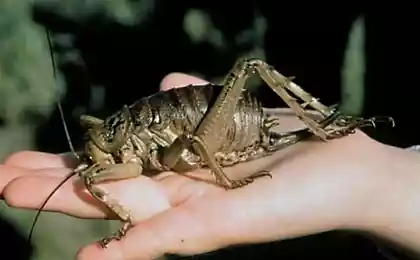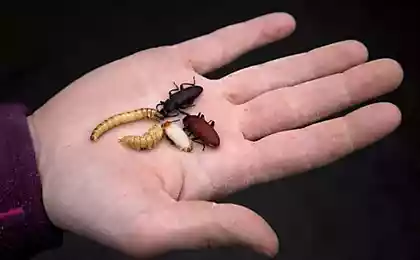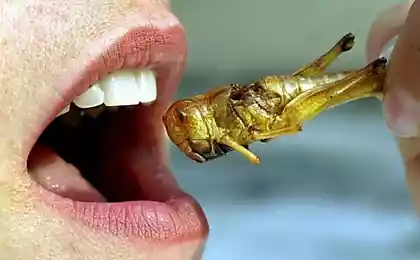1997
25 most annoying insects the world (25 photos)
Of course, without our ecosystem of insects would have long since died. On Earth, billions of them, and their role is enormous. Despite the fact that still most of them are safe, some species can be very dangerous man and bring much trouble. Some of them are toxic, and meeting with them can cost you your life. Here are 25 of the most unpleasant small creatures on our planet.
Termites

Termites are not dangerous to humans. Their role in the cycle of matter is very important, and in some cultures they are even eaten. However, these kids are not as harmless as they seem. They can do so that the new house will be completely uninhabitable, so the whole infrastructure they are extremely unsafe.
Lice
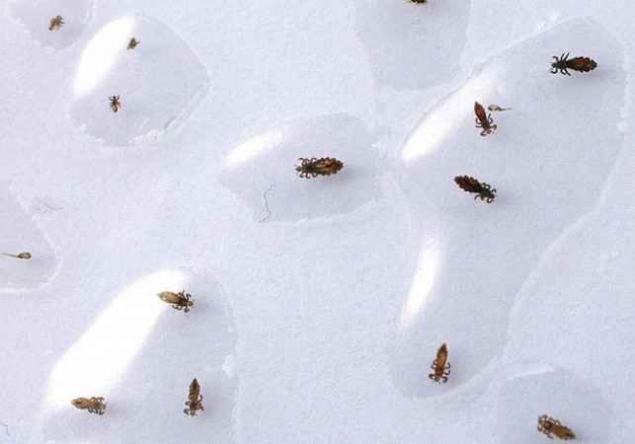
The main meal of lice - blood, skin cells and other secretions of the human body. These wingless parasites move in the space with the help of the people, because we are the main carriers of these creatures.
In nature, there are about 15 species of lice. Lice, like termites, direct risks to human health are not, but are carriers of various diseases.
Ticks Blackfoot
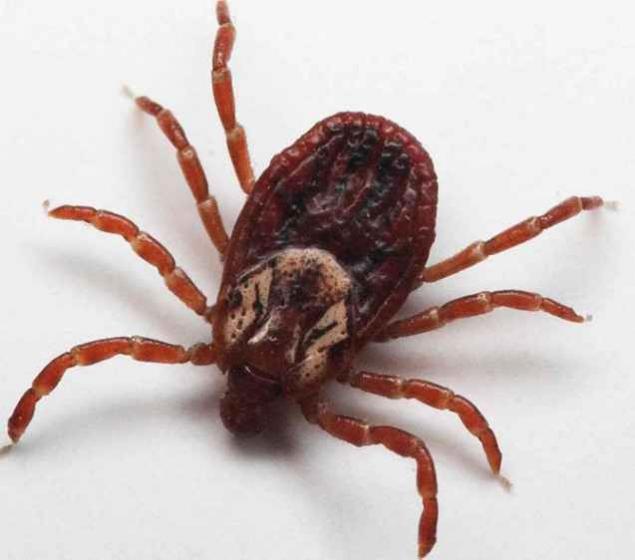
Because of this, being on the ground each year thousands of people suffer from Lyme disease, whose origin is associated with the appearance of a rash in the area of the bite. Among the early symptoms also noted a headache and fever.
With further development there are problems with cardio - vascular system. Very few people die from the bites of these mites, however, the consequences of "meeting" with him may be felt for many years.
Army ant

These creatures are actually dangerous. Nomadic (roving) Ants are known for their incredible aggression. These creatures, unlike other species of ants do not build their anthills. They produce colonies which regularly migrate from one place to another. During the day, they are always on the go, preying on small insects and vertebrates. In one day, one colony can kill about half a million small animals and insects.
Ants Bullet
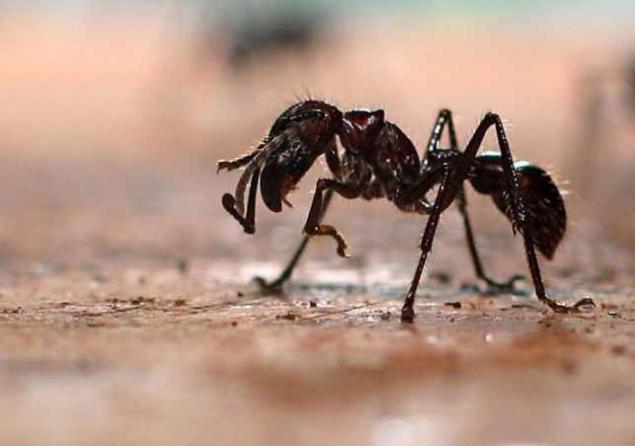
These large tropical ants (Paraponera clavata) have a potent sting. The ants get their name because of their sacrifices bites compared to the interaction with the ant is a shot. Once bitten more people during the day feels a lot of pain and constant throbbing. Some Indian tribes this kind of ants taking part in the rituals of vestments boys into adulthood. Often the boys happen temporary paralysis bitten fingers and even their blackening. During the study of venom contained in the bodies of these creatures was isolated paralyzing neurotoxin - poneratoksin.
Fire ants
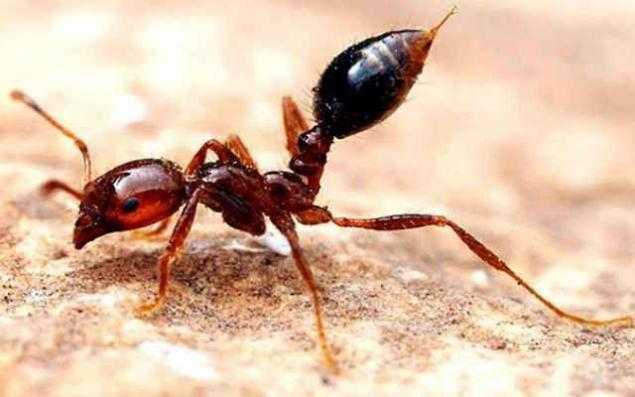
These ants have a strong and aggressive sting venom, whose bite is similar to burn from the flame. Hence the name of them.
Often under this name you can find the red fire ant, which is distributed worldwide. There are numerous cases of human contact with the ant, which ended with grave consequences, anaphylactic shock and even death.
Ants SIAF

The main place of residence of these creatures - East and Central Africa and tropical Asia. The colonies of insects many as 20 million individuals, with all of them blind.
They travel, guided by pheromones. Colonies do not build themselves permanent anthills, they wander from place to place. On the way, attacked by all invertebrates. And not all the attack, and a special group of soldiers that sting with their hooked jaws of the victims coming across. The jaws of these soldiers are so strong that in Africa they are used to secure the seams.
According to statistics, every year from the bites of these creatures are killed 20-50 people, are particularly sensitive to their bites are children and the elderly. Ants are very aggressive, especially when it comes to protecting their colony, which by chance may attack people.
Wasps
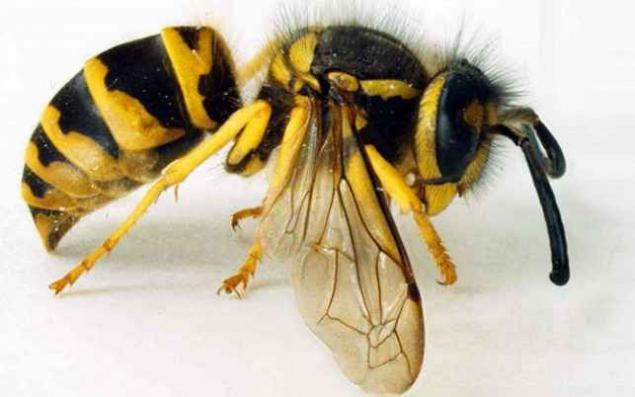
Most of the stinging creatures are not in immediate danger, but some varieties, such as the North American german wasp, grow to very large sizes and are extremely aggressive.
As soon as they sense danger or notice that someone is trying to break into their territory, they immediately begin to sting repeatedly, and very painful.
They mark their enemies, and often persecuted them even for some time.
Black widow
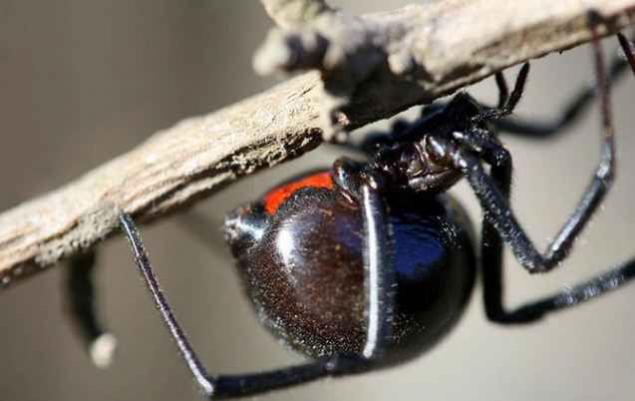
Despite the fact that the bite of the female of this spider is dangerous to human life because of the neurotoxin entering the body at the time of medical care, everything is limited only by the pain and discomfort.
However, the science known deaths from the bite of the Black Widow.
Brazilian spider
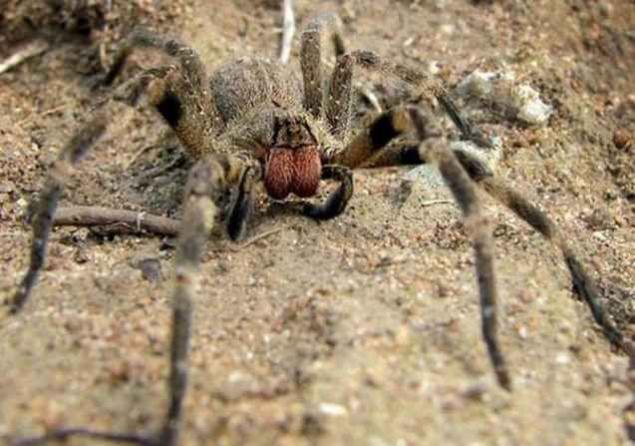
Brazilian wandering spider (Phoneutria) - a poisonous creature living in South and Central America. Guinness World Records in 2010 called him the most poisonous spider in the world.
Brazilian spider venom contains a potent neurotoxin incredible - PhTx3. At high concentrations of the toxin in the bite is a loss of muscle control, breathing problems, and then paralysis, followed by suffocation.
A bite from this spider on the sensation of pain is not strong, but the poison entering the body, instantly infects the lymphatic system and in 85 percent of cases leads to failure of the heart muscle.
One feels crazy mortis. From the bite of this spider antidote exists, but due to the enormous damage caused to poison the body, the percentage of successful detoxification process is equal to the victim's chances of survival.
Brown spider - hermits
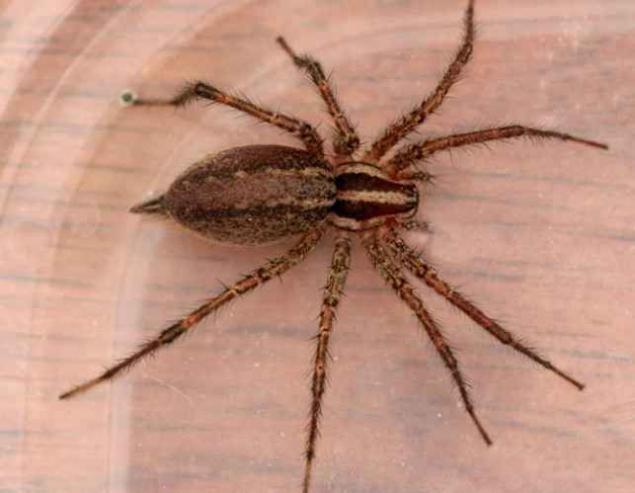
This spider, unlike Black widow does not release toxins. His bite breaks the skin from within and promotes the development of lesions in the healing that can take months.
The bite often go unnoticed, the thrill of the bite in most cases are similar to the prick of a needle. But after 2-8 hours the pain is felt. Then the situation develops depending on the amount taken into the body of poison.
Brown spider venom causes necrosis and destroys tissue. If you become a victim of a spider a small child or an elderly person, the bite can be fatal.
Hairy caterpillars
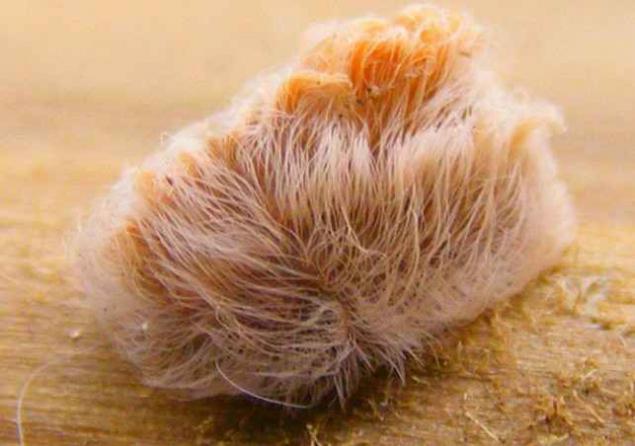
Despite the extremely attractive look of these hairy caterpillars (Megalopyge opercularis), do not be fooled by their funny appearance, because they are highly toxic.
Usually, people think that burning the hairs are, but actually secrete poison spikes, which are hidden in a layer of wool. After exposure to the poison can begin headache, dizziness, severe burning near the affected area, vomiting, lymph nodes, severe abdominal pain, and sometimes stop breathing.
Cockroaches

This is one of the most famous beetle vectors of diseases dangerous to humans. Working together with them the life of cockroaches climb into the garbage cans, toilet bowls, and other hot spots an accumulation of bacteria, and thus they are active carriers.
These red freaks carry a myriad of diseases, including worms, tuberculosis, typhoid, dysentery, fungus, various harmful unicellular organisms, viruses and bacteria.
Moreover, for many months, these critters can live without food and water.
Worms-parasites
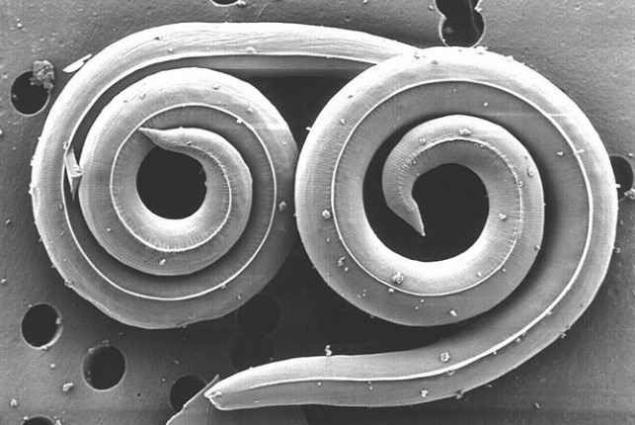
These worms - a kind of eukaryotic parasite. Most of these fellows are known to reside in the digestive tract and in the human intestine, causing insomnia, nausea, vomiting and other health problems.
Bedbugs

A man does not feel the bite of the bug, because in this small parasite saliva contains an anesthetic. If the bug is not the first time managed to get to the blood capillaries, it bites a person several times.
On the site of the bite develops itching, burning, and you may receive a blister. Occasionally among men encountered a severe allergic reaction to the bite of this creature. Fortunately, more than 70 percent of victims do not feel any effect after "meeting" with the bugs.
Bedbugs - a household insects, which are not classified as carriers of infectious diseases, but in his body, they for a very long period of time can carry blood-borne infections such as hepatitis B, fever, plague, tularemia.
The greatest harm they cause to people their bites, thus depriving him of a full sleep and rest, which then has a negative impact on the morale of health and performance.
Human gadflies
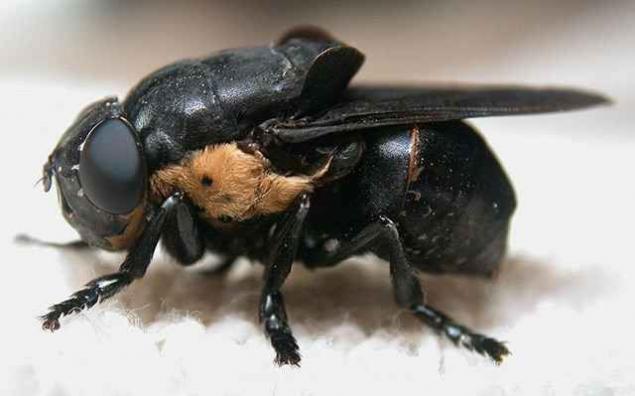
Human gadfly larvae are carriers of life-threatening human parasites. Carriers gadfly, as a rule, are the mosquitoes.
Once a mosquito carrying the larva bites a man, it immediately appears in the body of the "victim." After a few days of being under the skin of the larva grows and can trigger the development of a serious infection, if not promptly treated areas mosquito bite.
Centipede
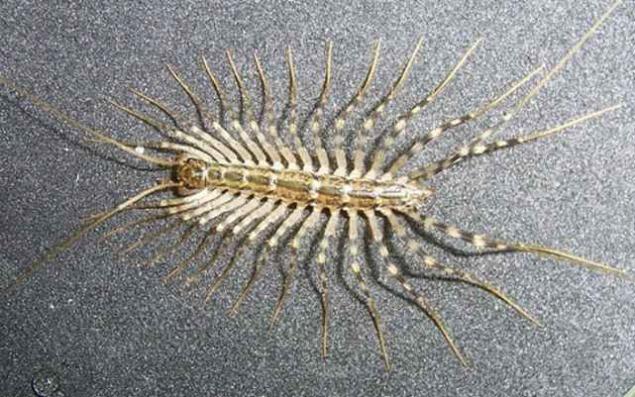
This creature (Scutigera coleoptrata), also known as the "Flycatcher", presumably a native of the Mediterranean. Over time, the centipede has spread around the world.
Despite its unattractive appearance, they perform useful work, eating spiders and insects - pests.
Man kills them because rejects appearance, while in some countries in the south of centipedes are protected by law. Flycatchers - are predators that vprysnuv poison victim, killing her.
Centipedes often settle in the apartments, but no harm to the furniture or food, they do not cause. They love moisture, so their favorite places - is the toilets, bathrooms and basements.
Living these creatures are surprisingly long time - up to 7 years in newborns flycatchers only 4 pairs of legs, each following they acquire during molting.
As a rule, the bite of this insect is not dangerous and is comparable to a bee sting light. However, many will be surprised to learn that every year someone dies from the bite of these creatures, and all because of the extremely rare allergic reaction to the venom of this insect.
Black scorpions
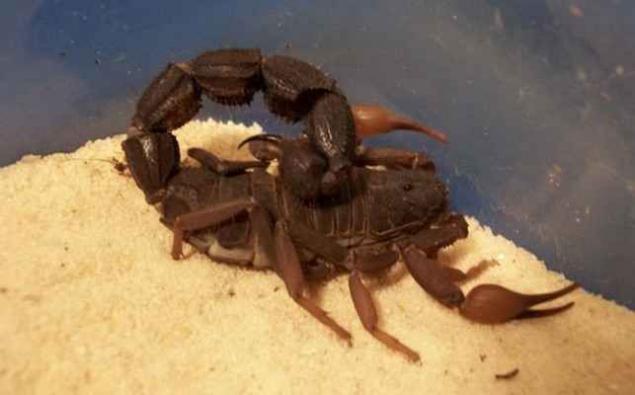
Scorpions - is dangerous arthropods arachnids creatures. Black Scorpions - among the most dangerous of their own kind.
They tend to live in South Africa, in the desert. From his other brothers, they differ in fat tails and slender legs. The venom of these scorpions can paralyze or even kill a person.
Hischnetsy
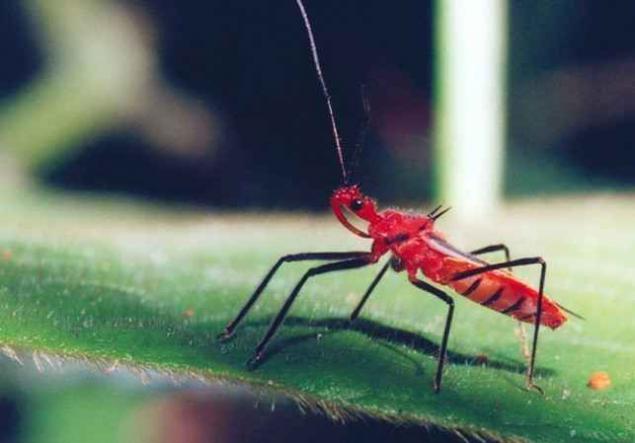
And here is the creation of another blood-sucking (Reduviidae). Their main source of food - are insects and larvae, but some species like to drink the blood of small animals and humans.
This beetle - a parasite is a carrier of Chagas' disease, while often infects people living in poor rural areas.
Malarial mosquitoes
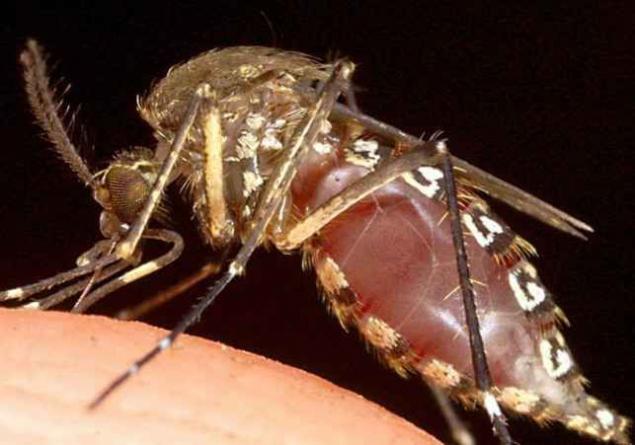
These insects of the parasites are carriers of dangerous to human malaria parasites. Komar also received the virus from an infected person or carrier.
Plasmodium in the mosquito passes a full cycle of sexual development and reproduction. Thus, infected mosquitoes within 10 days becomes a source of malarial infection and remains so up to 45 days.
Also transferred mosquitoes and other parasites, due to malaria which develops in animals.
Rat fleas
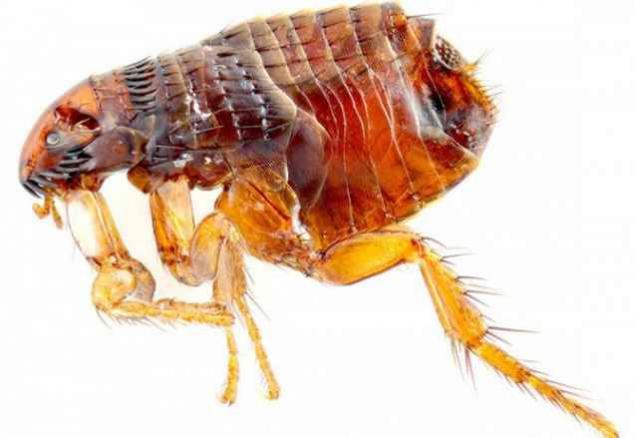
These fleas (Pulicidae) - the most dangerous, because they are the carriers of the plague. They feed on rats and gerbils. They carry Yersinia pestis and rat tapeworm parasitic worms.
The disease is transmitted from one generation to another through the rat eggs.
Fleas
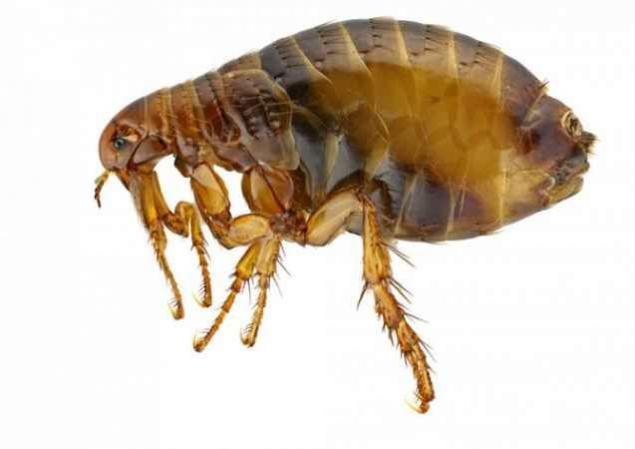
Despite the fact that few fleas taken seriously, seeing in them a no-brainer, they are, nevertheless, are carriers of various diseases from animals to humans.
Throughout history, fleas were often those who had contributed to the spread of serious diseases of mankind, such as, for example, the bubonic plague.
African honeybees
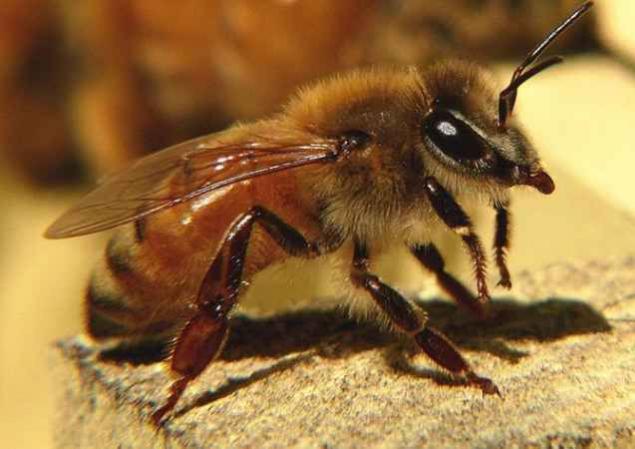
These bees are the descendants of those bees that were brought from Africa to Brazil in the mid-20th century to improve the production of honey in the state. Some uterine African bees began to interbreed with Brazilian.
African bees look also behave like a European, to identify them only by DNA analysis. I sting them as identical. But still there is one distinguishing feature of these bees - protective behavior while protecting their nests.
There are cases when the African bees are defending their homes and nests, killing livestock and even humans. For this they were nicknamed "the bees - killer».
Among other things, these bees behave as invaders. They often attack swarms of ordinary honey bee hive, placing its rules and there is a bee - the uterus. They attack aggressively and large colonies, ready to destroy anyone who encroach on their queen.
Giant Asian bees
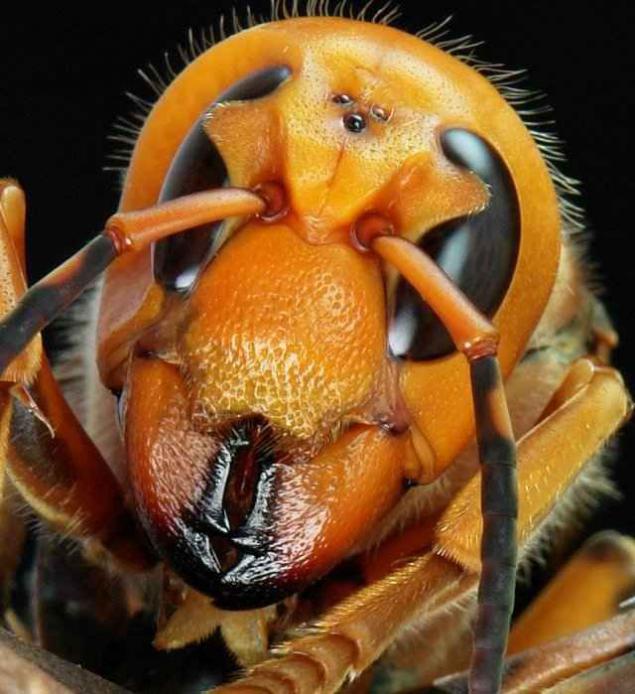
The size of a bumblebee several times larger than the usual, well-known to all of the Bumblebee. These Asian giants are the largest in the world - with a length of 5 cm sweep their wings is 7, 5 cm. The length of the sting of a bumblebee no more polusantimetra, but their bite can match any wasps or bees, and these bees can sting multiple times.
These dangerous companions you will not find in Europe or the US, but traveling in the mountains of Japan or Asia, you may well encounter with them.
People who lived through the bite of a bumblebee, compare it with the red-hot nail, stabs in the leg. The venom contains 8 different compounds that damage the soft tissues of the victim and attracts other bees.
If a person is allergic to bees, it can die from the bite of a bumblebee, but are also known cases of death from poison component constituting mandorotoksina. Statistics show that each year about 70 people die from contact with these insects.
Interestingly, the sting - this is not the main weapon hunting bees, they pursue their enemies and victims of powerful jaws.
Tsetse
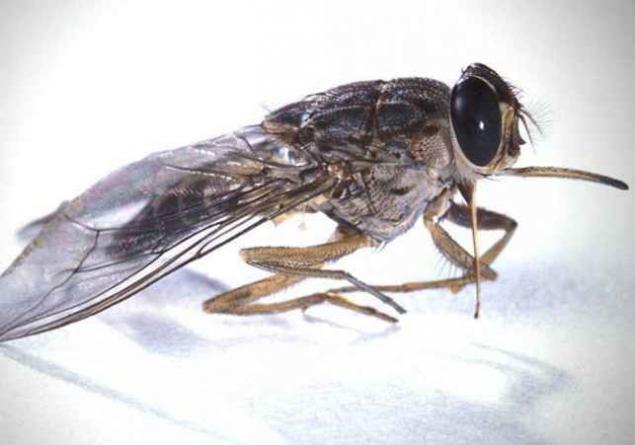
For the most part, these flies are found in the deserts of the Sahara and the Kalahari. They carry trypanosomiasis, which contribute to the development of sleeping sickness in humans and in animals.
These flies are anatomically very similar to their normal "colleagues", to distinguish them only by the presence of the proboscis on the front of the head and the manner of folding wings. It proboscis helps them produce their basic food - the blood of wild African animals.
In Africa, home to 21 species of flies with a length of 1, 5 cm. They are not harmless to humans, because it is actually killing people. It is known that at present Africa is home to about 500 000 people infected with sleeping sickness due to these flies.
This disease affects the cardio - vascular and endocrine systems. Further, the nervous system suffers, because of what occurs confusion in the mind and develop sleep problems.
The last large-scale epidemic of sleeping sickness was detected in Uganda in 2008. Generally, the disease has entered the WHO list of forgotten, however, is in Uganda for the past 6 years of it killed about 200 000 people.
It is noted that the disease is to blame for this bad economic situation in Africa. Interestingly, the flies attack any warm object, even a car, but the zebra crossing, they are not considered to have the animals - only flashing strips.
Add that these flies have saved the land of Africa from overgrazing and erosion which is provoked by cattle.
People have tried many different means to combat tsetse flies. Today they are fighting, firing wild animals, processing of male flies with radiation to sterilize, as well as cutting down shrubs.
Termites

Termites are not dangerous to humans. Their role in the cycle of matter is very important, and in some cultures they are even eaten. However, these kids are not as harmless as they seem. They can do so that the new house will be completely uninhabitable, so the whole infrastructure they are extremely unsafe.
Lice

The main meal of lice - blood, skin cells and other secretions of the human body. These wingless parasites move in the space with the help of the people, because we are the main carriers of these creatures.
In nature, there are about 15 species of lice. Lice, like termites, direct risks to human health are not, but are carriers of various diseases.
Ticks Blackfoot

Because of this, being on the ground each year thousands of people suffer from Lyme disease, whose origin is associated with the appearance of a rash in the area of the bite. Among the early symptoms also noted a headache and fever.
With further development there are problems with cardio - vascular system. Very few people die from the bites of these mites, however, the consequences of "meeting" with him may be felt for many years.
Army ant

These creatures are actually dangerous. Nomadic (roving) Ants are known for their incredible aggression. These creatures, unlike other species of ants do not build their anthills. They produce colonies which regularly migrate from one place to another. During the day, they are always on the go, preying on small insects and vertebrates. In one day, one colony can kill about half a million small animals and insects.
Ants Bullet

These large tropical ants (Paraponera clavata) have a potent sting. The ants get their name because of their sacrifices bites compared to the interaction with the ant is a shot. Once bitten more people during the day feels a lot of pain and constant throbbing. Some Indian tribes this kind of ants taking part in the rituals of vestments boys into adulthood. Often the boys happen temporary paralysis bitten fingers and even their blackening. During the study of venom contained in the bodies of these creatures was isolated paralyzing neurotoxin - poneratoksin.
Fire ants

These ants have a strong and aggressive sting venom, whose bite is similar to burn from the flame. Hence the name of them.
Often under this name you can find the red fire ant, which is distributed worldwide. There are numerous cases of human contact with the ant, which ended with grave consequences, anaphylactic shock and even death.
Ants SIAF

The main place of residence of these creatures - East and Central Africa and tropical Asia. The colonies of insects many as 20 million individuals, with all of them blind.
They travel, guided by pheromones. Colonies do not build themselves permanent anthills, they wander from place to place. On the way, attacked by all invertebrates. And not all the attack, and a special group of soldiers that sting with their hooked jaws of the victims coming across. The jaws of these soldiers are so strong that in Africa they are used to secure the seams.
According to statistics, every year from the bites of these creatures are killed 20-50 people, are particularly sensitive to their bites are children and the elderly. Ants are very aggressive, especially when it comes to protecting their colony, which by chance may attack people.
Wasps

Most of the stinging creatures are not in immediate danger, but some varieties, such as the North American german wasp, grow to very large sizes and are extremely aggressive.
As soon as they sense danger or notice that someone is trying to break into their territory, they immediately begin to sting repeatedly, and very painful.
They mark their enemies, and often persecuted them even for some time.
Black widow

Despite the fact that the bite of the female of this spider is dangerous to human life because of the neurotoxin entering the body at the time of medical care, everything is limited only by the pain and discomfort.
However, the science known deaths from the bite of the Black Widow.
Brazilian spider

Brazilian wandering spider (Phoneutria) - a poisonous creature living in South and Central America. Guinness World Records in 2010 called him the most poisonous spider in the world.
Brazilian spider venom contains a potent neurotoxin incredible - PhTx3. At high concentrations of the toxin in the bite is a loss of muscle control, breathing problems, and then paralysis, followed by suffocation.
A bite from this spider on the sensation of pain is not strong, but the poison entering the body, instantly infects the lymphatic system and in 85 percent of cases leads to failure of the heart muscle.
One feels crazy mortis. From the bite of this spider antidote exists, but due to the enormous damage caused to poison the body, the percentage of successful detoxification process is equal to the victim's chances of survival.
Brown spider - hermits

This spider, unlike Black widow does not release toxins. His bite breaks the skin from within and promotes the development of lesions in the healing that can take months.
The bite often go unnoticed, the thrill of the bite in most cases are similar to the prick of a needle. But after 2-8 hours the pain is felt. Then the situation develops depending on the amount taken into the body of poison.
Brown spider venom causes necrosis and destroys tissue. If you become a victim of a spider a small child or an elderly person, the bite can be fatal.
Hairy caterpillars

Despite the extremely attractive look of these hairy caterpillars (Megalopyge opercularis), do not be fooled by their funny appearance, because they are highly toxic.
Usually, people think that burning the hairs are, but actually secrete poison spikes, which are hidden in a layer of wool. After exposure to the poison can begin headache, dizziness, severe burning near the affected area, vomiting, lymph nodes, severe abdominal pain, and sometimes stop breathing.
Cockroaches

This is one of the most famous beetle vectors of diseases dangerous to humans. Working together with them the life of cockroaches climb into the garbage cans, toilet bowls, and other hot spots an accumulation of bacteria, and thus they are active carriers.
These red freaks carry a myriad of diseases, including worms, tuberculosis, typhoid, dysentery, fungus, various harmful unicellular organisms, viruses and bacteria.
Moreover, for many months, these critters can live without food and water.
Worms-parasites

These worms - a kind of eukaryotic parasite. Most of these fellows are known to reside in the digestive tract and in the human intestine, causing insomnia, nausea, vomiting and other health problems.
Bedbugs

A man does not feel the bite of the bug, because in this small parasite saliva contains an anesthetic. If the bug is not the first time managed to get to the blood capillaries, it bites a person several times.
On the site of the bite develops itching, burning, and you may receive a blister. Occasionally among men encountered a severe allergic reaction to the bite of this creature. Fortunately, more than 70 percent of victims do not feel any effect after "meeting" with the bugs.
Bedbugs - a household insects, which are not classified as carriers of infectious diseases, but in his body, they for a very long period of time can carry blood-borne infections such as hepatitis B, fever, plague, tularemia.
The greatest harm they cause to people their bites, thus depriving him of a full sleep and rest, which then has a negative impact on the morale of health and performance.
Human gadflies

Human gadfly larvae are carriers of life-threatening human parasites. Carriers gadfly, as a rule, are the mosquitoes.
Once a mosquito carrying the larva bites a man, it immediately appears in the body of the "victim." After a few days of being under the skin of the larva grows and can trigger the development of a serious infection, if not promptly treated areas mosquito bite.
Centipede

This creature (Scutigera coleoptrata), also known as the "Flycatcher", presumably a native of the Mediterranean. Over time, the centipede has spread around the world.
Despite its unattractive appearance, they perform useful work, eating spiders and insects - pests.
Man kills them because rejects appearance, while in some countries in the south of centipedes are protected by law. Flycatchers - are predators that vprysnuv poison victim, killing her.
Centipedes often settle in the apartments, but no harm to the furniture or food, they do not cause. They love moisture, so their favorite places - is the toilets, bathrooms and basements.
Living these creatures are surprisingly long time - up to 7 years in newborns flycatchers only 4 pairs of legs, each following they acquire during molting.
As a rule, the bite of this insect is not dangerous and is comparable to a bee sting light. However, many will be surprised to learn that every year someone dies from the bite of these creatures, and all because of the extremely rare allergic reaction to the venom of this insect.
Black scorpions

Scorpions - is dangerous arthropods arachnids creatures. Black Scorpions - among the most dangerous of their own kind.
They tend to live in South Africa, in the desert. From his other brothers, they differ in fat tails and slender legs. The venom of these scorpions can paralyze or even kill a person.
Hischnetsy

And here is the creation of another blood-sucking (Reduviidae). Their main source of food - are insects and larvae, but some species like to drink the blood of small animals and humans.
This beetle - a parasite is a carrier of Chagas' disease, while often infects people living in poor rural areas.
Malarial mosquitoes

These insects of the parasites are carriers of dangerous to human malaria parasites. Komar also received the virus from an infected person or carrier.
Plasmodium in the mosquito passes a full cycle of sexual development and reproduction. Thus, infected mosquitoes within 10 days becomes a source of malarial infection and remains so up to 45 days.
Also transferred mosquitoes and other parasites, due to malaria which develops in animals.
Rat fleas

These fleas (Pulicidae) - the most dangerous, because they are the carriers of the plague. They feed on rats and gerbils. They carry Yersinia pestis and rat tapeworm parasitic worms.
The disease is transmitted from one generation to another through the rat eggs.
Fleas

Despite the fact that few fleas taken seriously, seeing in them a no-brainer, they are, nevertheless, are carriers of various diseases from animals to humans.
Throughout history, fleas were often those who had contributed to the spread of serious diseases of mankind, such as, for example, the bubonic plague.
African honeybees

These bees are the descendants of those bees that were brought from Africa to Brazil in the mid-20th century to improve the production of honey in the state. Some uterine African bees began to interbreed with Brazilian.
African bees look also behave like a European, to identify them only by DNA analysis. I sting them as identical. But still there is one distinguishing feature of these bees - protective behavior while protecting their nests.
There are cases when the African bees are defending their homes and nests, killing livestock and even humans. For this they were nicknamed "the bees - killer».
Among other things, these bees behave as invaders. They often attack swarms of ordinary honey bee hive, placing its rules and there is a bee - the uterus. They attack aggressively and large colonies, ready to destroy anyone who encroach on their queen.
Giant Asian bees

The size of a bumblebee several times larger than the usual, well-known to all of the Bumblebee. These Asian giants are the largest in the world - with a length of 5 cm sweep their wings is 7, 5 cm. The length of the sting of a bumblebee no more polusantimetra, but their bite can match any wasps or bees, and these bees can sting multiple times.
These dangerous companions you will not find in Europe or the US, but traveling in the mountains of Japan or Asia, you may well encounter with them.
People who lived through the bite of a bumblebee, compare it with the red-hot nail, stabs in the leg. The venom contains 8 different compounds that damage the soft tissues of the victim and attracts other bees.
If a person is allergic to bees, it can die from the bite of a bumblebee, but are also known cases of death from poison component constituting mandorotoksina. Statistics show that each year about 70 people die from contact with these insects.
Interestingly, the sting - this is not the main weapon hunting bees, they pursue their enemies and victims of powerful jaws.
Tsetse

For the most part, these flies are found in the deserts of the Sahara and the Kalahari. They carry trypanosomiasis, which contribute to the development of sleeping sickness in humans and in animals.
These flies are anatomically very similar to their normal "colleagues", to distinguish them only by the presence of the proboscis on the front of the head and the manner of folding wings. It proboscis helps them produce their basic food - the blood of wild African animals.
In Africa, home to 21 species of flies with a length of 1, 5 cm. They are not harmless to humans, because it is actually killing people. It is known that at present Africa is home to about 500 000 people infected with sleeping sickness due to these flies.
This disease affects the cardio - vascular and endocrine systems. Further, the nervous system suffers, because of what occurs confusion in the mind and develop sleep problems.
The last large-scale epidemic of sleeping sickness was detected in Uganda in 2008. Generally, the disease has entered the WHO list of forgotten, however, is in Uganda for the past 6 years of it killed about 200 000 people.
It is noted that the disease is to blame for this bad economic situation in Africa. Interestingly, the flies attack any warm object, even a car, but the zebra crossing, they are not considered to have the animals - only flashing strips.
Add that these flies have saved the land of Africa from overgrazing and erosion which is provoked by cattle.
People have tried many different means to combat tsetse flies. Today they are fighting, firing wild animals, processing of male flies with radiation to sterilize, as well as cutting down shrubs.











